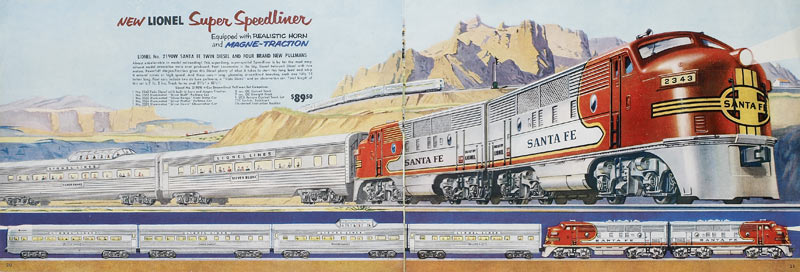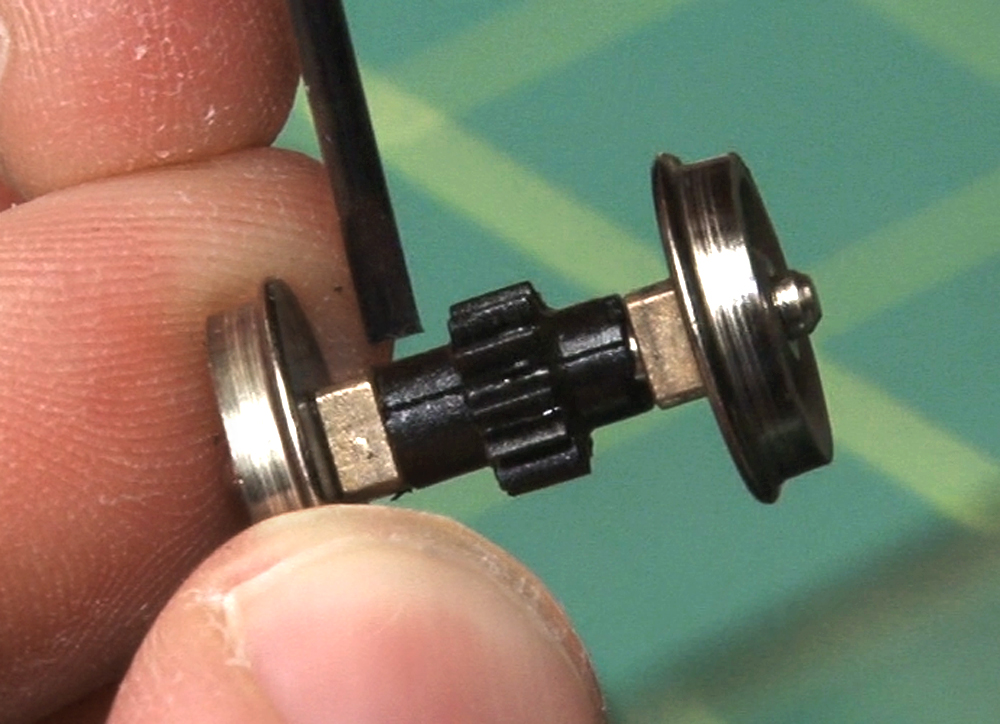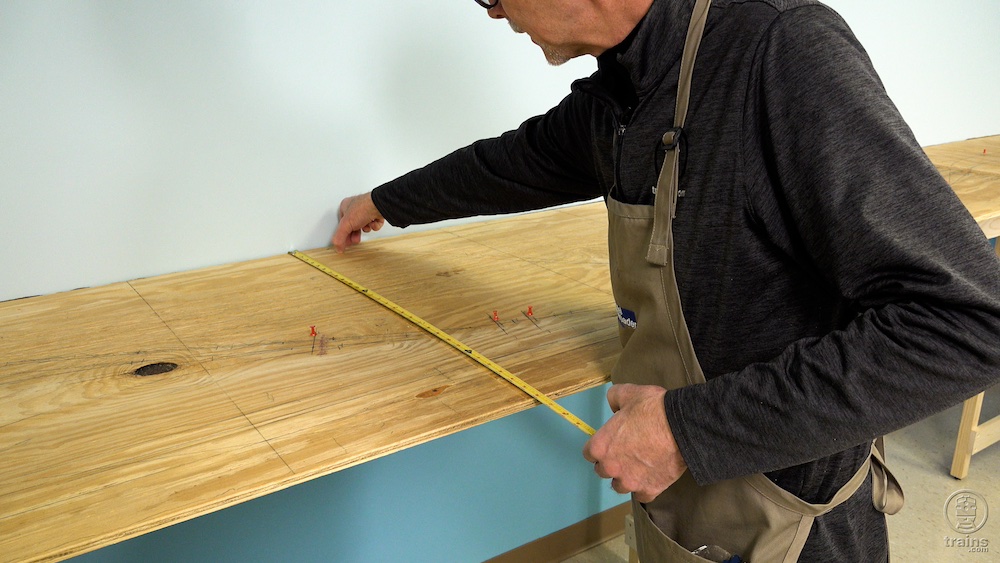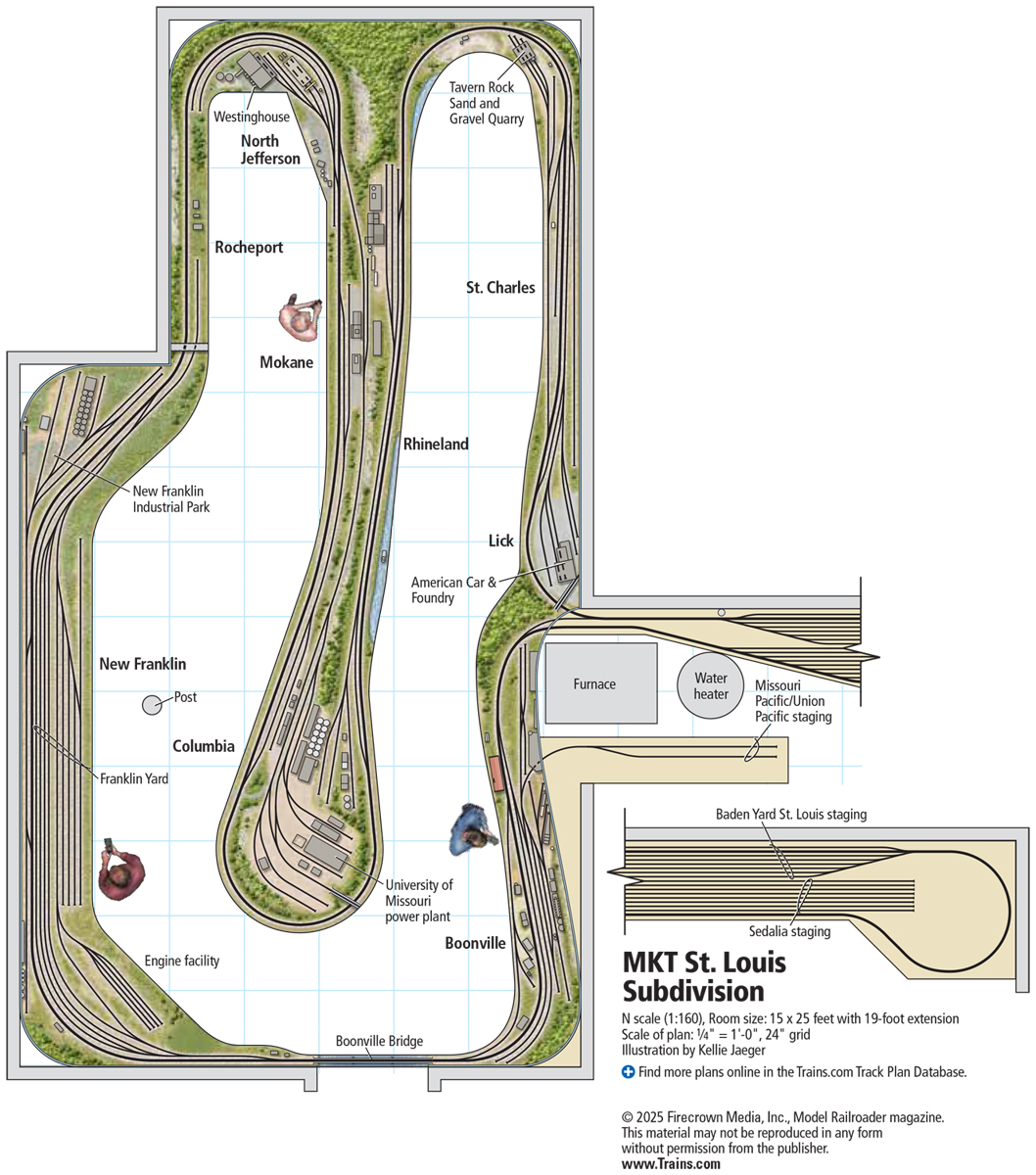My greatest find occurred in 1957, when I was 13 years old. Before I tell you about it, let me share some memories of my growing up in northeast Philadelphia.
Second-hand trains
My family wasn’t wealthy, so my trains were mostly what I scrounged up using my allowance. One example was my Lionel GG1 (a No. 2332 with one motor) that I bought used at Allied Hobbies. I bought it for $14 and carried it home on the bus. I would go to department stores the week after Christmas and buy “distressed” stuff that was used in displays. A little fixing up, and it ran great.
My dad built a 4 x 13-foot platform and then left the rest to me. He gave me complete freedom to build a layout, and I laid and wired the O-27 track, made the mountains and tunnels, and landscaped everything over the next 4 years.
I built mountains out of papier-mâché that smelled up the house. I used rubber cement to hold the grass and ballast in place. I didn’t know about using diluted matte medium because it didn’t exist! Luckily, my mom supported me and put up with the papier-mâché, the plaster dust, and all the smells. She was happy because she always knew where I was. I have wonderful memories of climbing all over that layout with rock ‘n’ roll playing on a Philco radio in the basement.
What the girls had
All my 13-year life what I wanted was a Lionel No. 2343 Santa Fe F3 A-A combination. Our next-door neighbors (girls) were given the Santa Fe set with the aluminum cars from an uncle who had no children of his own.
I envied Joanne and Margie for getting the greatest train in the world. Being Jewish, I was permitted to go to their home each Christmas morning and run their trains as long as they let me. They also had an O gauge Berkshire freight set, but I was in love with the Santa Fe diesels (steam engines were so old-fashioned), which seemed better than the O-27 trains that my folks got me.
Joanne and Margie had a baby sister and then ultimately a brother. I hope he became as interested in those Lionel trains as I was.
A dream comes true
During this time of cruising on my bike to all the area hobby shops and hardware stores selling train stuff, I ended up at Penn Hardware located on Frankford Ave. This was just before Hanukkah in 1957.
I spied two master boxes on the top shelf that looked intriguing. I opened the end of one and saw a brand-new Santa Fe. I almost had a heart attack!
The No. 2343 diesel had never been sold. It had grab irons in front, silver trucks, clear portholes, and the screen on the dynamic brakes. It was the best version, since Lionel was now building F3s with blackened trucks and without portholes, screens, or grabs. A “vintage” version, new in the box, was a real find!

I asked the owner the price of the diesel, and he said, “$20.” Twenty bucks for a brand-new F3! I felt like I was in heaven.
I raced home as fast as I could pedal and told my parents that I had found my Hanukkah present. They drove me back there that night to pick it up.
I was concerned that this O gauge locomotive might not run on the O-27 tracks on my layout, but it did and ran well. It had been equipped with two horizontally mounted motors and therefore was a “growler.” I loved that sound, which was as close to a diesel sound as you could get back then.
I ran the F3 A-A lash-up until the wheels fell off. Of course, it desperately needed a B unit. While at one of the department stores in 1958, I found one of Lionel’s F3 B units, though it lacked portholes and screens and had black trucks.
It didn’t take me long in my “loco customization workshop” to drill out the portholes, put in acetate circles, and paint the trucks silver. Looking closely you could tell it was a modified B, but at speed (I ran them fast!), you couldn’t. I now had a full-length Santa Fe A-B-A combination. By the way, that B unit was $5, so the entire unit cost $25 (in 1957 dollars).
From models to trains
The trains remained up until I turned 16, when cars, guitars, and girls (in that order) entered my life. I didn’t build a model until my sophomore year at Michigan State University.
One day I wandered into a hobby shop in East Lansing, Mich. I realized how much I missed building models and bought a Revell hotrod, the Orange Crate. I applied candy apple paint with a gold undercoat and a transparent orange top coat. This model rekindled a desire to build stuff, so through my college years I continued to do so.
After marrying and having children, I lived in a townhouse with a one-car garage and no basement. I brought out the trains and ran them on the dining-room floor, but they didn’t ignite a “train love” in my daughter or son. Adam got into radio-controlled cars and computer games, so the trains stayed in their boxes.
Eventually, my family and I moved to a larger home with a 900-square-foot basement. That empty part of the house was used for tennis practice and then became a repository for the contents of various dorm rooms.
When Adam was in high school, he and I started on an N scale layout with some hand-me-down trains. We got as far as designing the layout on construction paper and building L-girder benchwork, and then he went away to college.
Concurrently, I wanted to get into live steam locomotive building and needed more tools … lots more tools to get started. I decided that I “wasn’t going to play with big trains ever again,” so I took the box to the Toy Train Station (now Joe’s Trains) in Feasterville, Pa., and sold everything, including the 2343 F3s.
I did buy lots of precision tools and a toolbox with the money, and I use those tools constantly. However, lacking serious machine tools, I never did build the live steamer. I did give N scale another chance and later moved up to HO.
Returning home to O gauge
In 1995, after dropping my son off to take his medical school admission test, I took a side trip to Nicholas Smith Trains in Broomall, Pa. I intended to look for HO trains. The store is located above a toy shop, and as I climbed to the top of the stairs and looked across the room there was a wall of O gauge engines. Many of them were already at full-scale length and were represented by MTH, Weaver, and Williams.
I quickly discovered how much had changed in the toy train hobby since I “dropped out” in 1961. Then someone demonstrated the sound systems. Wow! I decided then and there that I was going back to “big” trains.
I got back into the hobby with both feet and now have 17 locomotives, including the latest scale version of Lionel’s Santa Fe F3. It’s spectacular engine, but doesn’t have the emotional appeal that my 2343 Santa Fe sure had.
Everything I own runs on a 13 x 27-foot layout with a double-track main line made up of track from Ross Custom Switches. No more O-27 – it’s all O-88 and O-96 to handle the likes of J1s, S1s, T1s, Verandas, Centipedes and more.
Nice as all of these “monster” locomotives are, none of them can measure up to the “vintage” Lionel Santa Fe F3s that I found almost hidden in a store in 1957. I made my “greatest find” back when I was just 13 years old.














I still have all my childhood trains (and many more), but I still get a wistful feeling when I recall the estate sale a few blocks from my childhood home with a box full of Santa Fe F3 engines and passenger cars priced at $25. I raced home and begged for the money from my poor preacher parents, but it was just too much money in 1962. I wasn’t quite old enough then to have started earning money mowing yards, etc., so I was out of luck.
You have the greatest f3 lionel ever made
wow my dad gave all of his trains away from about the same time frame
I guess I was lucky, my mom saved my all my Lionels including the Santa Fe 2333 power and dummy unit. I still have the original box and it has a price of $29.95. I have been bitten by the bug to build a layout after all these years.
Great story. Oh I wish I could go back in time and buy those trains I wanted so much then. Now some of them are near impossible to afford.
Such reminiscing is a lot of fun. I remember a friend of mine(at about age 10 or 11) being given a Santa Fe diesel(maybe a 2343 or maybe a 2353) by his dad. It had great appeal to me, but I never owned one until adulthood in the early 70s. Great article!
I really enjoyed the story. My mother never got rid of my trains and when I was working on my Master's degree in college, I got the trains out again. The bug hit me! I restored my Lionel 224 and the cars that we had. Since then I have bought many postwar Lionel and American Flyer trains. I have restored many of them to their origional looks. Thanks again for the article.